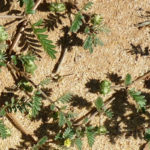
Snapdragons Growing Caring Tips
Snapdragons Flowers – How to Grow & Care For Snapdragon Plants
 Snapdragons have brightly coloured flowers and can spice up your spring or autumn garden. The Latin name of Snapdragon is Antirrhinum and belongs to the genus of plants that are commonly called as the dragon flowers. The flowers of the Snapdragon look more or less like the face of a dragon and its mouth will be opened and closed when it is squeezed. Once the snapdragon flowers are squeezed on the sides, both the upper and lower lip of the snapdragon flowers mouth will snap open and shut exposing the long stamens coming from the back of the flower. They are cold seasoned plants and will bloom in cooler weather. The flowers are the most attractive portion of the plant and they start to bloom from the base of the stalk to the top of the stalk. These tender perennials can be grown annually and love full to partial sunlight. Once the temperature is high, Snapdragons stop blooming.
Snapdragons have brightly coloured flowers and can spice up your spring or autumn garden. The Latin name of Snapdragon is Antirrhinum and belongs to the genus of plants that are commonly called as the dragon flowers. The flowers of the Snapdragon look more or less like the face of a dragon and its mouth will be opened and closed when it is squeezed. Once the snapdragon flowers are squeezed on the sides, both the upper and lower lip of the snapdragon flowers mouth will snap open and shut exposing the long stamens coming from the back of the flower. They are cold seasoned plants and will bloom in cooler weather. The flowers are the most attractive portion of the plant and they start to bloom from the base of the stalk to the top of the stalk. These tender perennials can be grown annually and love full to partial sunlight. Once the temperature is high, Snapdragons stop blooming.
Leaves and Flowers of Snapdragon
The Snapdragon is a garden plant and can be used as bedding, rockery or container plants. The plants grow to a height of 6 inches to 48 inches depending on their variety. The cultivars of the Snapdragon offer crimson red, snowy white or yellow two lips flowers. You can find the flowers to come in a myriad of colours, except for the colour blue. You can also find bi-shaded, bold coloured or soft pastel coloured Snapdragon flowers. The leaves of the plant are arranged spirally around the stem and they are alternate and lanceolate.
How to Grow Snapdragons?
It would be ideal to plant Snapdragons during late winter. It is better to start planting them during the early gardening season so that they bloom well during the cooler weather.
- They need to be planted in a location where they get full to partial sunlight.
- The soil must be a well draining soil.
- If you are looking to germinate Snapdragons from seeds, then you should understand that they are very slow to germinate.
- Sowing them indoors is a good option and they will need light to germinate. The Snapdragon will start to show up within 3 to 4 weeks of sowing and then they can be transferred to your garden where it gets rich, moist soil and adequate sunlight.
- Adding organic compost or manure to the soil will aid in growing these cool season plants. Snapdragons bloom according to the temperature and not according to a calendar.
- If you are planting tall varieties of Snapdragon, then you should stake the plant to make it stand upright.
Snapdragon Caring Tips
Snapdragon care involves clipping the plants after each round of flowers. Clipping is very important this does encourage the plants to turn bushy in turn the snapdragon plant will grow more flowers. Cut off the top stem after the first bloom and also clip away all the long side shoots to make the plant bushy. During summer time, the Snapdragon blooms will start to fade. The plant has to be clipped by half or one third of its size to encourage blooming in the coming cooler months. The soil must be moist during the growing period and regular watering is a must to encourage the Snapdragon to grow and bloom well. An inch of water every week is needed by the plant. Once the plant is established, allow the soil to dry for an inch deep before watering it again.

























